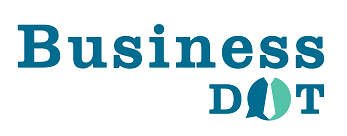
Managing payroll can be a taxing process for small business owners and HR professionals. With two main options available—manual payroll and payroll software—choosing the right method can drastically impact your business’s efficiency and accuracy. In this article, we’ll compare these two approaches across several key factors to help you decide which is best for your needs.
Accuracy and Timeliness of Payroll Processing
Manual Payroll
When processing payroll manually, errors are almost inevitable. Human calculations are prone to mistakes, particularly with complex tax rates, deductions, and overtime calculations. Additionally, manual payroll can be time-consuming, requiring double-checking and reconciliation to ensure accuracy. Missing deadlines or making errors can result in penalties and disgruntled employees.
Payroll Software
On the other hand, payroll software automates calculations, reducing the risk of errors significantly. These tools are designed to ensure timely payments and accurate deductions, considering all the nuances of tax laws and employee benefits. Automatic updates on tax rates and compliance requirements mean less room for error and a quicker payroll process.
Example: According to a 2022 study by the American Payroll Association, businesses using payroll software reported a 70% reduction in payroll errors compared to those using manual methods.
Cost and Time Savings
Manual Payroll
While manual payroll might appear cost-effective initially, it can become expensive over time. The process demands significant labour hours, especially as your business grows. The costs associated with correcting errors and potential penalties for late or inaccurate payments can add up quickly.
Payroll Software
Investing in payroll software can lead to significant cost and time savings in the long run. While there is an upfront cost, the reduction in manual labour and errors can offset this investment. Automated processes mean your HR team can focus on more strategic tasks, improving overall productivity.
Compliance with Tax Laws and Payroll Regulations
Manual Payroll
Staying compliant with constantly changing tax laws and payroll regulations is challenging when processing payroll manually. It requires continuous research and updates to ensure you’re adhering to the latest legal requirements. Non-compliance can lead to fines and legal issues.
Payroll Software
Most payroll software solutions are regularly updated to reflect changes in tax laws and regulations. This ensures that your payroll processes remain compliant without requiring constant manual intervention. Compliance features built into the software can help avoid costly fines and legal complications.
Ease of Use and Learning Curve
Manual Payroll
Manual payroll requires a thorough understanding of payroll processes, tax laws, and accounting principles. Training new staff can be time-consuming and challenging, especially without a dedicated payroll specialist.
Payroll Software
Modern payroll software is designed with user-friendliness in mind. These platforms often include intuitive interfaces, step-by-step guides, and customer support to help you get started. While there is still a learning curve, it’s generally less steep than mastering manual payroll processes.
Example: Tools like Gusto and QuickBooks offer extensive tutorials and customer support, making it easier for small businesses to transition from manual to automated payroll.
Security of Payroll Data
Manual Payroll
Storing payroll data manually, whether on paper or local computer files, poses significant security risks. Unauthorized access or data breaches can compromise sensitive employee information, leading to potential legal issues and loss of trust.
Payroll Software
Payroll software usually comes with advanced security features, including encryption and secure cloud storage. These measures protect sensitive payroll data from unauthorized access and cyber threats. Regular backups ensure that your data is safe even in case of hardware failures.
Statistic: According to a 2021 report by Cybersecurity Ventures, 43% of cyber attacks target small businesses. Secure payroll software can mitigate this risk.
Conclusion Which Option is Right for You?
Choosing between manual payroll and payroll software ultimately depends on your business’s specific needs and resources.
For small businesses and HR professionals seeking accuracy, time and cost savings, compliance, ease of use, and enhanced security, payroll software is the clear winner. It reduces the burden on your team, minimises errors, and ensures compliance with evolving tax laws and regulations.
However, if your business is very small or you have a tight budget, you might opt for a manual payroll process initially. But keep in mind the long-term benefits of transitioning to payroll software as your business grows.

